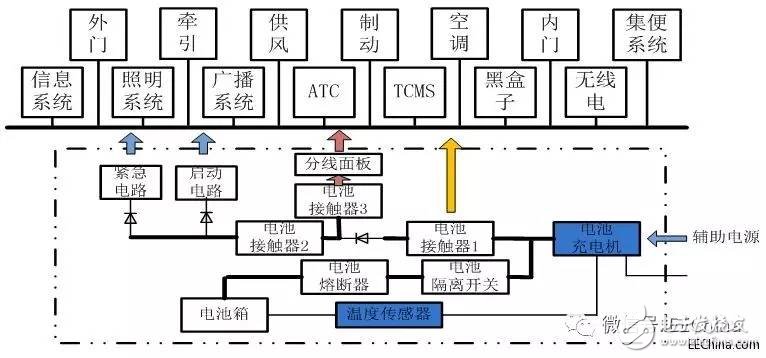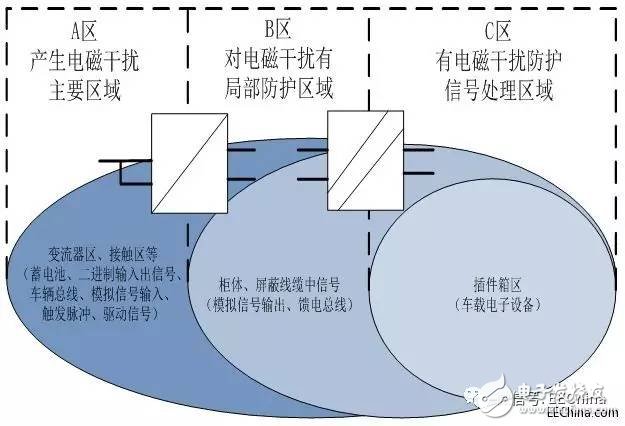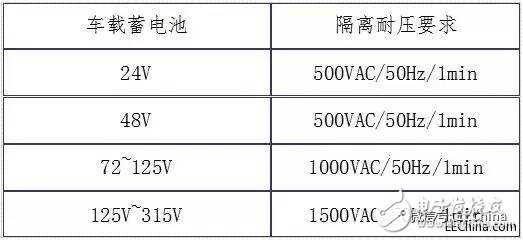This paper introduces the power supply requirements and classification of rail transit vehicle equipment, and combines the requirements of EN50155-2007 in the standard of in-vehicle electronic equipment, and proposes the requirements for DC/DC selection in in-vehicle electronic equipment, including isolation and input voltage range requirements. , the operating temperature range, and the required characteristics, etc. Finally, the selection guide for the isolated DC/DC power supply module for the in-vehicle electronic equipment unit is recommended for the above points.
As a country with more than half of the world's high-speed rail operation, China's total target during the 13th Five-Year Plan period (2016~2020) is to reach 150,000 kilometers of railways by 2020 and 30,000 kilometers of high-speed railways. The total scale is an increase of 29,000 kilometers, of which the high-speed railway has increased by 11,000 kilometers. The investment in the “13th Five-Year Plan†high-speed railway is expected to exceed 4 trillion yuan, and the investment in railway locomotives is about 800 billion yuan.
In contrast to the international market of China's high-speed rail, a number of overseas projects have made significant progress. The Indonesian Yawan high-speed railway and the Zhonglao Railway have started construction. The Serbian section of the Sino-Thai Railway and the Hungarian Railway has officially started. The Moscow-Kazan high-speed railway project in Russia has been confirmed. The railway has become a beautiful business card of "Made in China", and it is the focus of the government's push to "go out" in the "One Belt, One Road" plan. Railway construction in developing countries such as India has enormous potential for development.
First, the introduction of automotive electronicsWith the continuous development of the railway industry, in order to improve the reliability of vehicle operation and improve passenger comfort, a large number of electronic devices are used in rail transportation. The power supply of the in-vehicle electronic equipment is mainly provided by the vehicle-mounted auxiliary power supply system, and the auxiliary power supply system refers to all the load devices that require power except the traction power system, including the auxiliary power supply system and the battery system.
Under normal circumstances, the power supply of the vehicle electronic device is outputted by the charger as a low-voltage bus power supply. The battery system normally supplies power to the TCMS system, the lighting system, and other systems, and plays an energy buffer in the event of a temporary failure of the charger. effect.

Figure 1. Power supply for the battery system
The vehicle electronics is mainly composed of TCMS system (network control system), signal system, passenger consultation broadcast system, air conditioning control system, etc.; each system is powered by, in order to ensure reliable operation between each system, Isolation power is required to power each subsystem to isolate faulty in-vehicle electronics and prevent the spread of fault areas.
A large number of in-vehicle electronic devices are interconnected through the train communication bus, and the driver can control each in-vehicle electronic system through the on-board controller, which can realize the telemetry function and achieve the purpose of remote control. The application of intelligent technology for in-vehicle electronic devices puts higher demands on the isolated bus.

Figure 2. Typical EMC area and isolation system interface
Second, the requirements of in-vehicle electronic equipmentDue to the wide variety of in-vehicle electronic devices and the differences, in order to ensure that the in-vehicle electronic devices can meet the special requirements of railway car use, their products must meet the requirements of EN50155 and other standard content; all in-vehicle electronic device interfaces need to meet the potential difference, electromagnetic Compatible, personal safety and other requirements, and control the failure spread caused by external faults.
The standard requirements for in-vehicle electronic equipment are as follows:
1. Environmental requirements such as altitude, temperature and humidity, shock vibration and IP rating requirements;
2. Electrical requirements such as power requirements, electrical isolation, etc.;
3. Surge and electrostatic discharge requirements; surge test is mainly overvoltage demand test, the maximum need to withstand 1.4 times the conventional voltage demand;
4. EMC requirements; including CE, RE and CS, RS, Surge, EFT, ESD and other requirements, for different interface parts, use different level requirements; as shown in Figure 2.
5. Reliability, maintainability and estimated service life of the device; such as maintainability verification: use indicator light to indicate, locate the fault occurrence point, and facilitate maintenance; if reliability operation verification, the mileage is not less than 10W kilometers, the running time is not less than 1 year, etc.;
6. Other requirements: For power supply interruption, drop and other requirements, the general module power supply design is difficult to meet the 10mS interrupt demand, especially for low-voltage input products, it is necessary to increase the peripheral input and output to meet customer needs; for the short-circuit protection measures of the battery, generally adopted Anti-reverse or mechanical design to circumvent this failure.
Third, the power supply selection of automotive electronic equipmentAs one of the methods to prevent the spread of faults, isolated power supply plays an important role in in-vehicle electronic equipment. However, during the operation of the vehicle, various states exist, such as severe vibration state; severe external environment temperature change rate, etc. Appeared; ordinary conventional industrial-grade power supply is difficult to meet its use requirements; then the vehicle power supply needs to be?
1. Shock and vibration:
Due to the nature of the railway operating environment, railway vehicles are subject to shock and vibration. Random vibration and shock test requirements must be applied to electronic equipment installed on railway vehicles. For the power module, the method of fixing the onboard components by potting can effectively enhance its resistance to vibration and shock.
For example, Jinshengyang Railway Power R3 series products can fully meet the requirements of vibration 10~55Hz 10g 30Min along XYZ.
The rated supply voltage of the vehicle battery mainly has the following five types: 24V, 48V, 72V, 96V, 110V, etc.; due to auxiliary equipment startup or inductive load switching, surge voltage or low voltage will occur; power supply design input The voltage parameters are able to operate within the voltage range of 0.6VN and 1.4VN; and the power supply manufacturer is compatible with multiple on-board battery voltage levels.
Such as 1. Jinshengyang railway power supply product URB1D24YMD-6WR3, the input voltage range is 40VDC~160VDC, compatible with the three supply voltage levels of vehicle battery 72VDC, 96VDC, 110VDC.
2. Isolation electrical requirements:
The test voltage of the dielectric test (withstand voltage test) of the in-vehicle electronic device is related to the supply voltage of the vehicle battery, and the relevant requirements are as follows:
Table 1. Relationship between isolation withstand voltage and battery voltage

For the type of power supply of the in-vehicle electronic equipment is uncertain, for example, the 110V battery may float above 125V or the low voltage may generate more than 125V; it is recommended to use the 1500VAC isolation requirement to meet the electrical isolation requirements for transient overvoltage; Such as Jinshengyang Railway Power Supply 6WR3, can meet the electrical isolation requirements of 1500VAC/2250VDC;
3. Temperature and humidity requirements:
In order to meet the temperature variation range and humidity range requirements of long-distance railway locomotives, it is required that the vehicle power supply requirements meet the requirements of the ambient temperature of -40 ° C ~ 85 ° C, and it is necessary to pass the reliability test of high and low temperature cycle and wet heat exchange. Jinshengyang Railway Power Products are designed and manufactured in accordance with the strict quality control system, and can pass the type reliability test required by the railway.
4. Special surge requirements:
Each country has inconsistent requirements for special surges, such as: British Railway Standard RIA12 "General Specification for Transient Surge Protection in DC Control Systems for Drag and Carry Equipment" (Overseas sentence can be deleted; or FAE offers The standard English version) requires that the electronic equipment connected to the power supply battery must be able to withstand two waveforms: one is 1S 1.5 times the input voltage waveform, the other is 3.5 times the input voltage, and the surge voltage is 20mS. The source impedance of the surge pulse voltage is 0.2 Ω. If the rated voltage of the power supply battery is 110 VDC, it is difficult to absorb (set the clamp voltage VC to 160 VDC) up to = 2475 J if only a single clamp device is used for protection. Generally, the instantaneous clamp suppression device is difficult to meet the requirements, and special circuits or modules are required to meet the standard requirements. Jin Shengyang assisted in the use of series-connected power devices to form an active clamp circuit that clamps the transient surge voltage to a voltage range that the railway power supply can withstand. For example, the auxiliary device FC-CX3D, the input voltage range is 66VDC~160VDC, the maximum output power is 100W, and the maximum limit clamp voltage is 165VDC. The patented circuit-active clamp circuit can achieve a maximum efficiency of 98%.
5. Other needs:
For power supply interruptions, drops, etc., the general module power supply design is difficult to meet the 10mS interrupt requirements, and it is necessary to increase the peripheral input and output capacitors to meet customer needs.
Fourth, summaryThis paper analyzes the requirements of in-vehicle electronic equipment, and then provides guidance for the correct selection of DCDC isolated power modules for rail vehicle electronic equipment. It is of great significance for the reliable use of railway module power supplies.
Data Acquisition Adcs Dacs,Ics Data Acquisition Adcs/Dacs,Data Acquisition Adc / Dac Professional,Ic Chip Data Acquisition Adcs/Dacs
Shenzhen Kaixuanye Technology Co., Ltd. , https://www.iconlinekxys.com